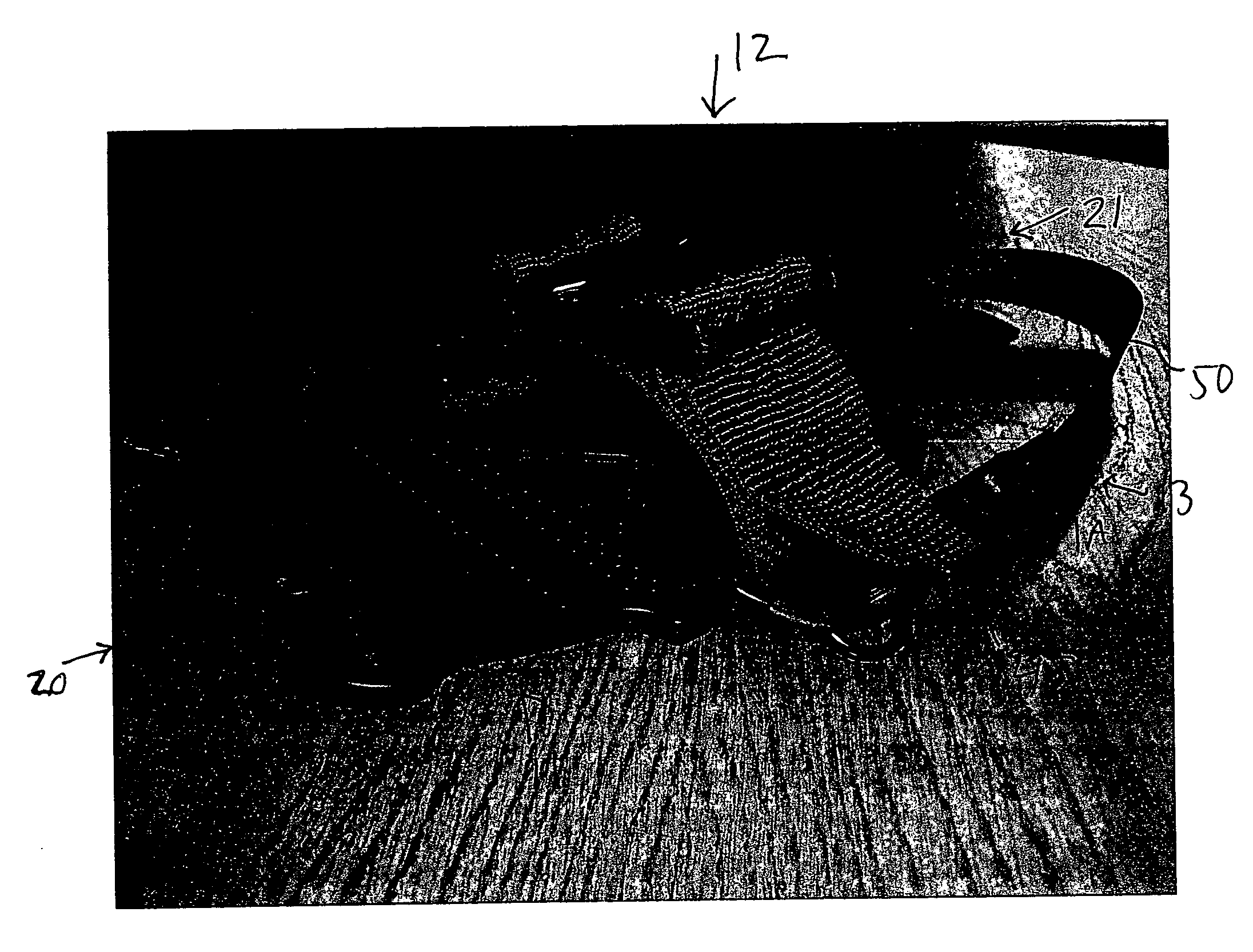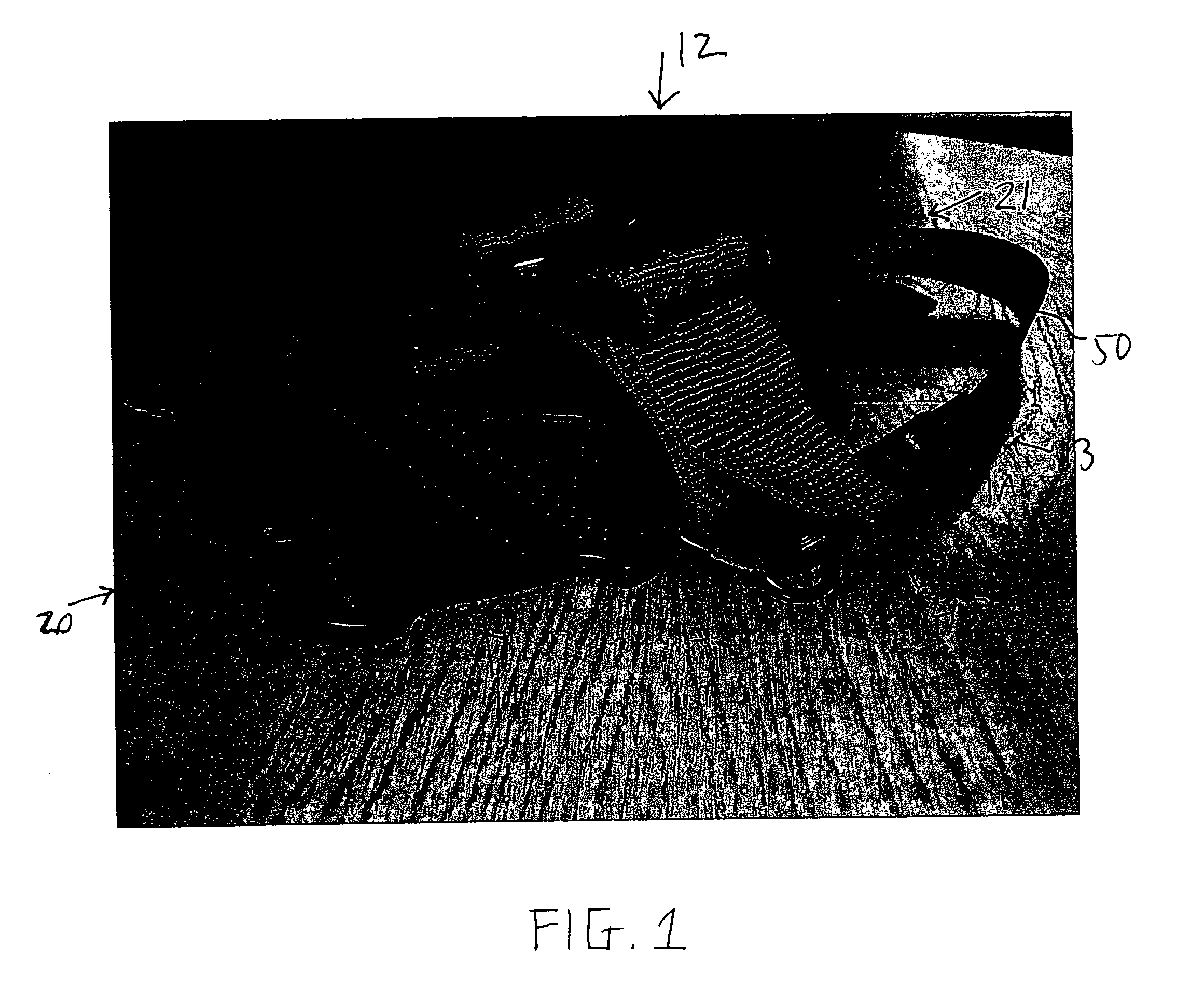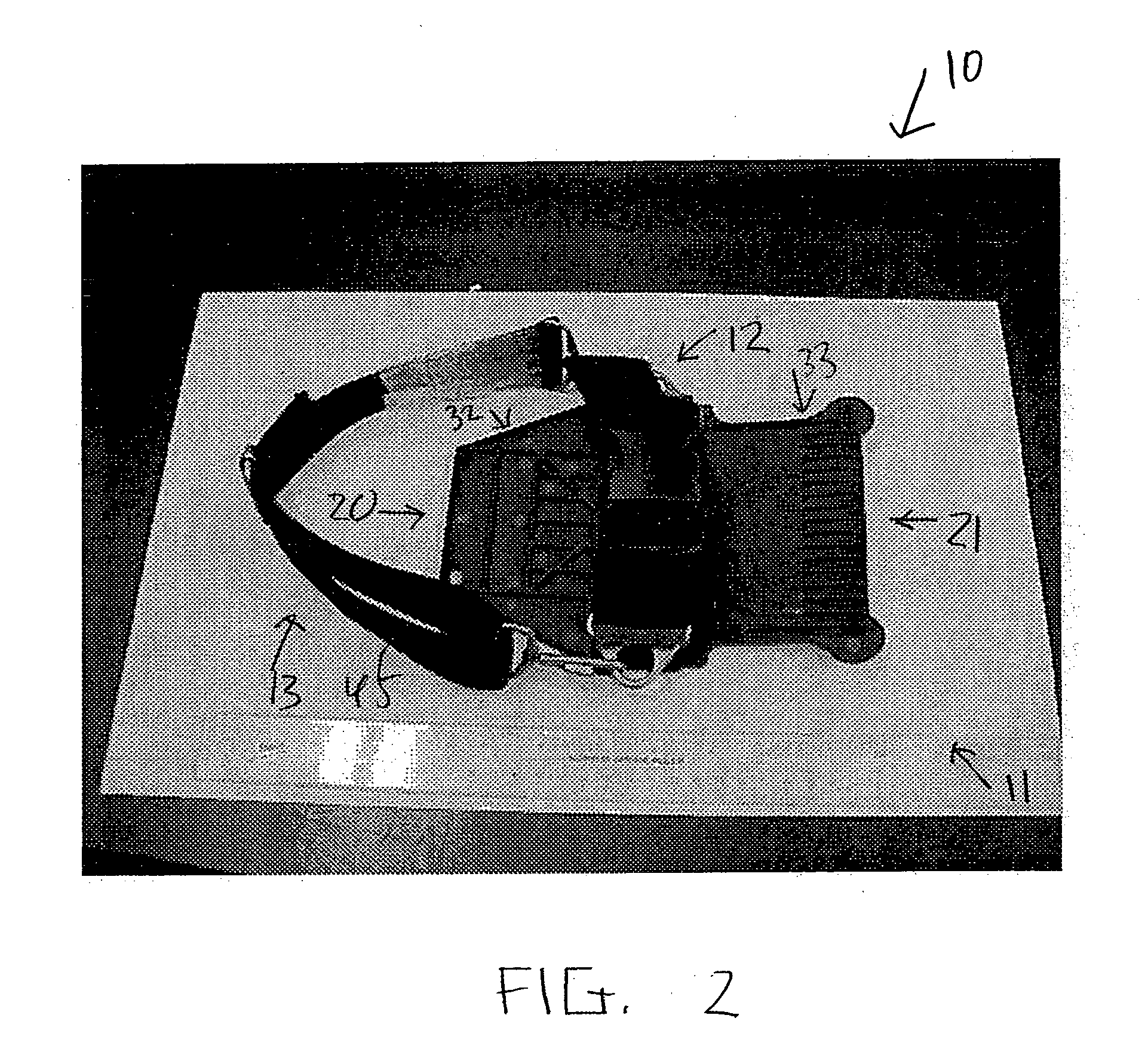Materials handling technology
a technology for manipulating materials and materials, applied in the direction of crowbars, lifting devices, fastenings, etc., can solve the problems of significant limitations and shortcomings of technology, and achieve the effects of convenient use, reliable, accurate and efficient, and flexibility and resiliency
- Summary
- Abstract
- Description
- Claims
- Application Information
AI Technical Summary
Benefits of technology
Problems solved by technology
Method used
Image
Examples
Embodiment Construction
[0045] The embodiments of the invention described is intended to be illustrative and not to be exhaustive or limit the invention to the exact forms disclosed. The embodiments are chosen and described so that persons skilled in the art will be able to understand the invention and the manner and process of making and using it.
[0046]FIGS. 1 and 2 show an embodiment of the lifting tool 10 of the present invention comprising generally, a body 11, a top or instep strap 12 connected to the body 10, and a rear or heel strap 13 connected to the top strap 12 and body.
[0047] Referring also to FIGS. 3 and 4, in a preferred usage, the tool 10 is secured to a shoe 14 or foot of a user. A pair of tools 10 may be applied to the right and left feet simultaneously of a user. Operatively secured, the user may walk or otherwise move about. The user positions his or her foot and the attached lifting tool 10 near a piece of material 15 or other work piece, for example a standard sheet or panel of drywa...
PUM
 Login to View More
Login to View More Abstract
Description
Claims
Application Information
 Login to View More
Login to View More - R&D
- Intellectual Property
- Life Sciences
- Materials
- Tech Scout
- Unparalleled Data Quality
- Higher Quality Content
- 60% Fewer Hallucinations
Browse by: Latest US Patents, China's latest patents, Technical Efficacy Thesaurus, Application Domain, Technology Topic, Popular Technical Reports.
© 2025 PatSnap. All rights reserved.Legal|Privacy policy|Modern Slavery Act Transparency Statement|Sitemap|About US| Contact US: help@patsnap.com



